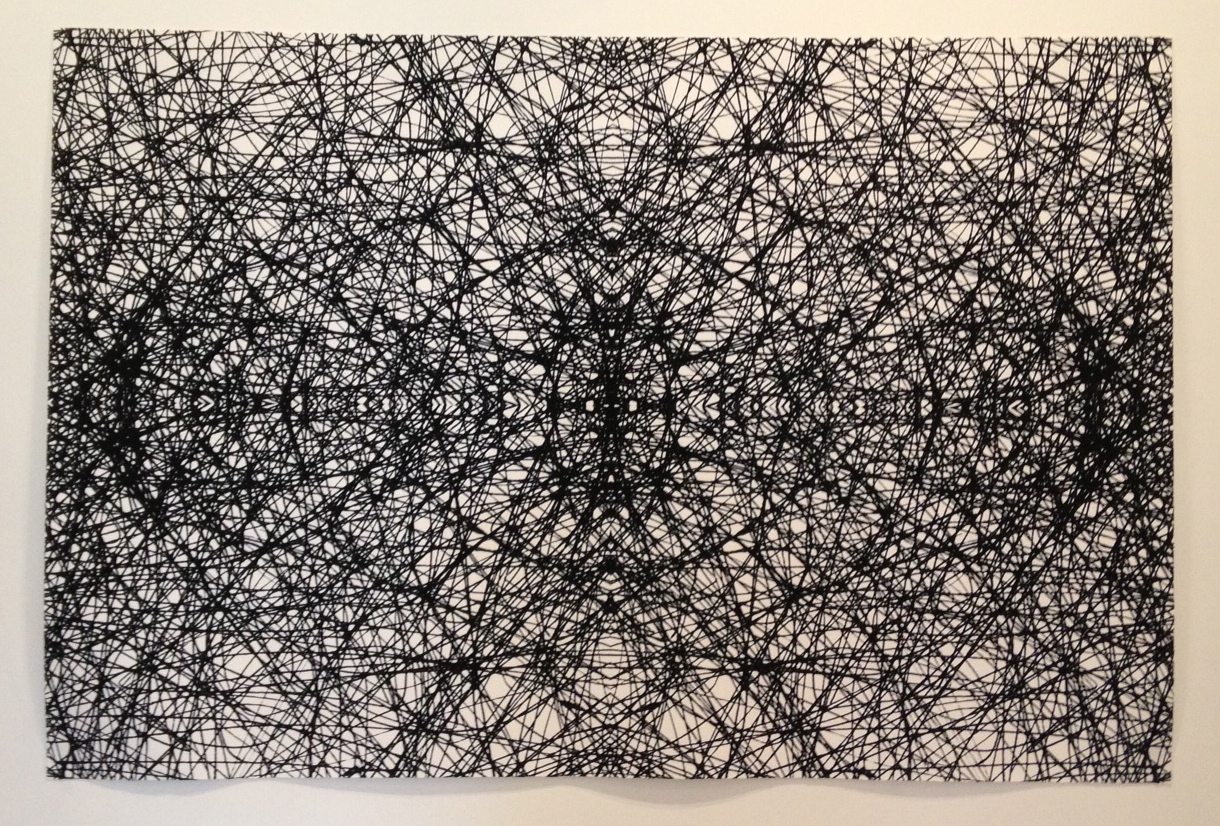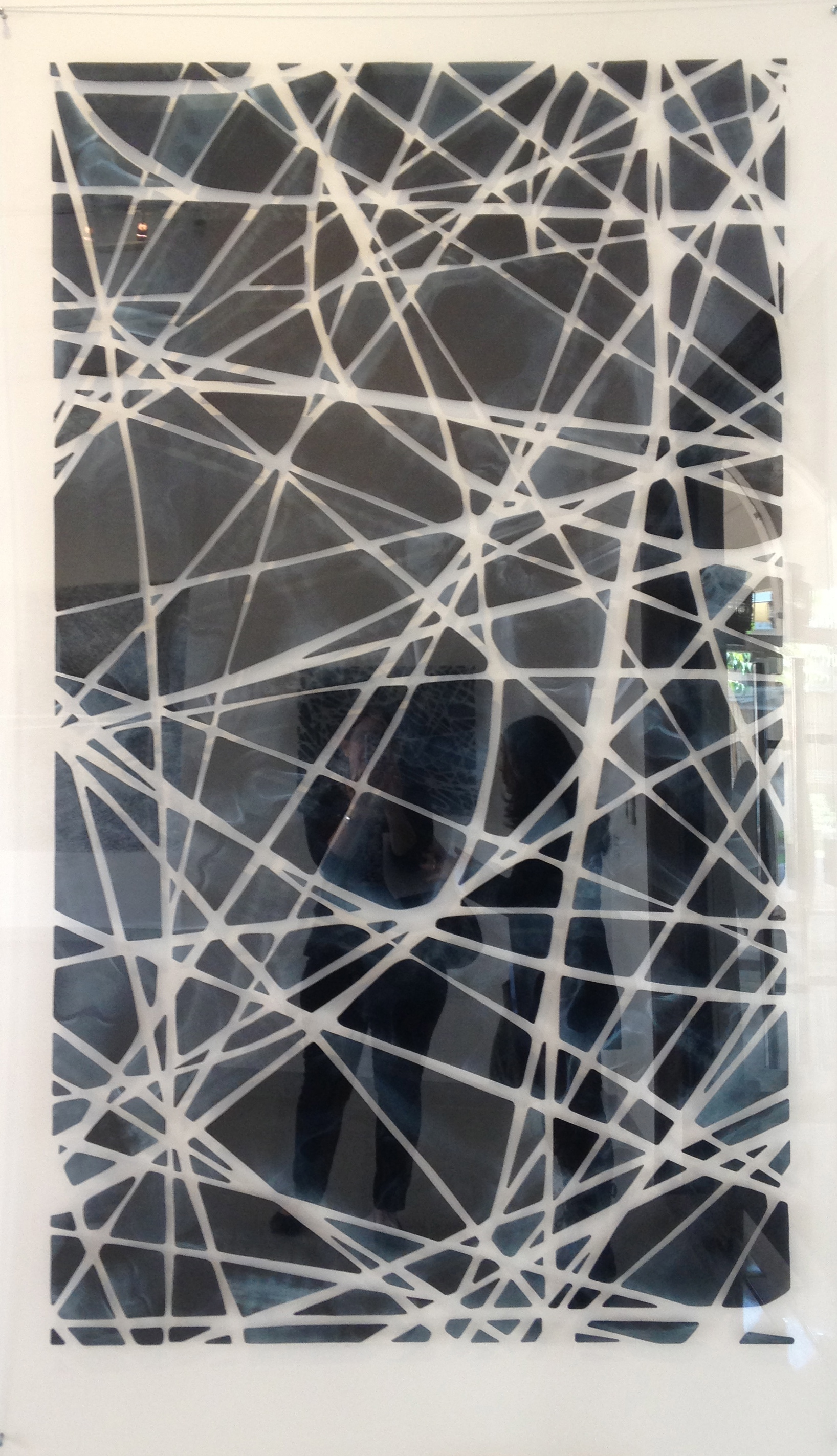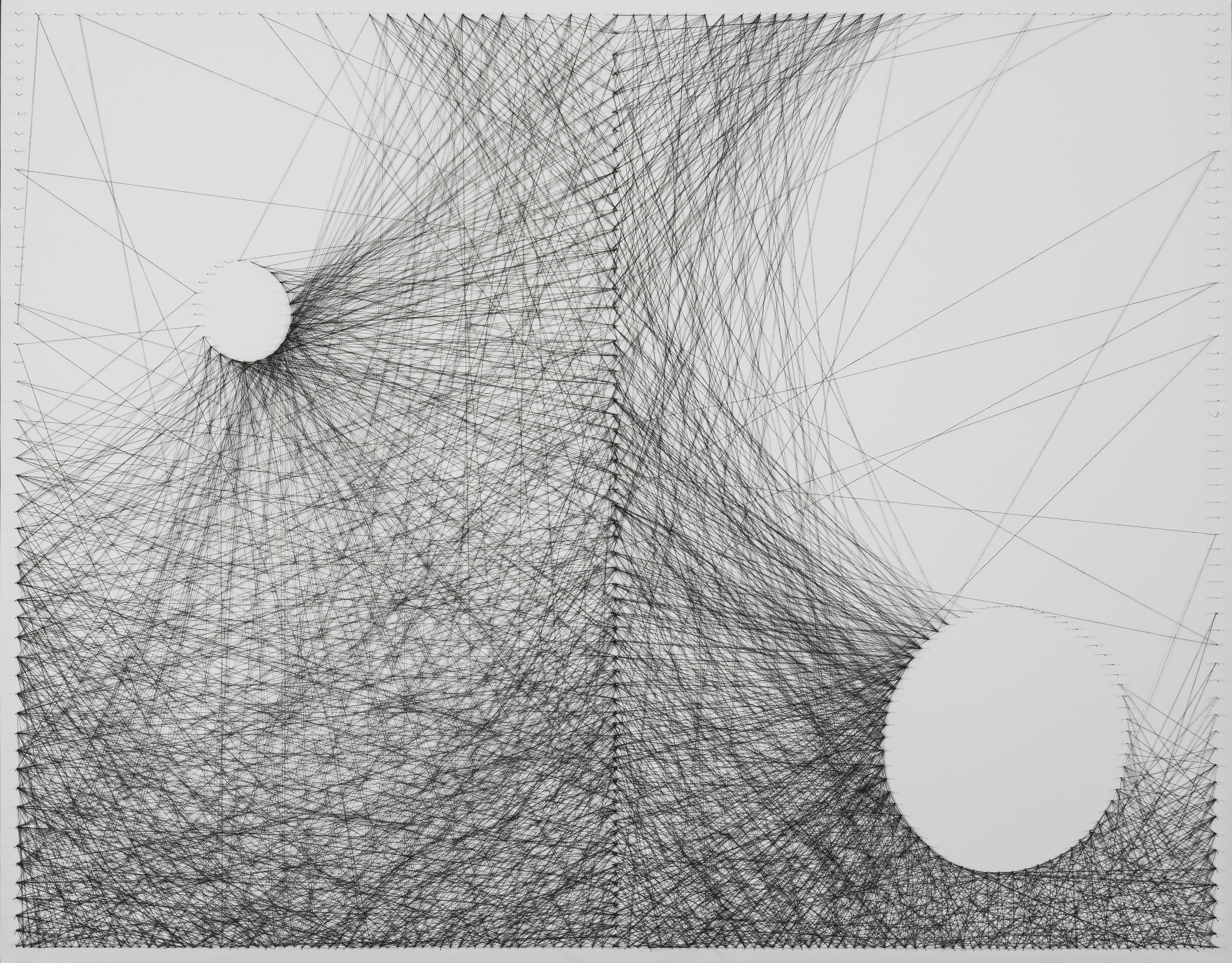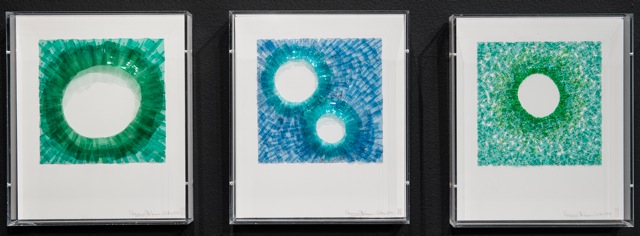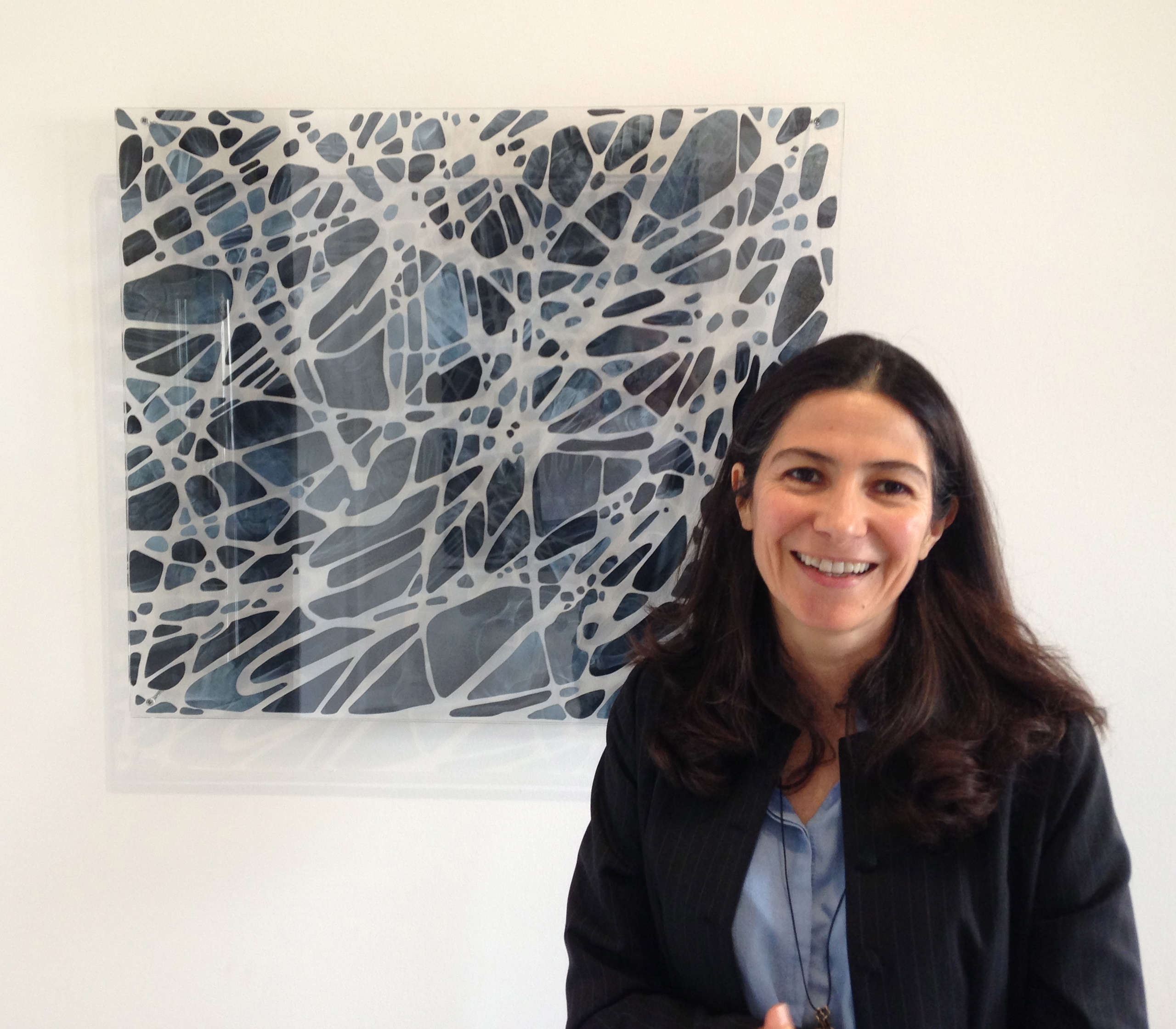Energy exists within, between and around everything from the infinitesimal to the astronomical. It seems to have tendencies that manifest itself in similar ways at all scales, a common language.
– Mariana Heilmann
I had both the visual pleasure and an amazing hands-on experience with Colombian born artist Mariana Heilmann’s Resonance exhibit at Katara Art Center this week. Heilmann is a Doha-based contemporary artist who is delving deeply into matters of energy, time and space through a technique of perpetual motion and the innate tendency that chaos has to bring order to itself. Her long-term interest in science feeds and enriches the visual vocabulary of her work as she explores dispersion, connection, repetition and sequence in a variety of mediums.
The Resonance exhibition actually stems from a continuation of her earlier 2005-6 Energy series, which was an epiphany moment for the artist. By releasing her energy through music she found a universal message:
It was a process of sustained repetitive mark making, involving a suspension of thought and a spontaneous release of energy; an attempt to witness and record how continuous, random and chaotic movement tends towards order. The resulting image was like looking through a microscope and a telescope at the same time.
Using one print from the earlier series as the basis for all the work in the exhibition, Heilmann has created a mixed media show, featuring prints, collage, string and some more unusual materials. By manipulating the original image in a variety of ways, she ruminates on the cosmic and the microscopic. The show-stopping piece in the entrance, 4 floor-to-ceiling panels – a blow up of the original work divided and hung randomly – sets the tone for the beautifully arranged exhibition. Of course, I had visions of an amazing loft designed around these monumental prints…
A smaller monoprint has one quadrant repeated as mirror image fourths and reads as a kaleidoscope or stained glass or perhaps even neural pathways in the brain. It reminded me of a more visceral version of these from the Damien Hirst exhibit earlier this year. And the church-related analogy turns out not to be very far off.
Other works featured map-like collages which are actually enlargements of small fragments of the original drawing fleshed out by cut up x-rays. The light and dark spaces have been reversed in these lucite sandwiched pieces and the cut up x-rays are fragmented and ghostlike.
Thanks to scanning facilities and large scale digital printers I am able to feed off the image and explore how manipulating scale can reveal layers of similarities with the natural world. (neurons, bone structure, surfaces of a leaf, skin, road systems, city layouts, etc.)
My immediate visual connection to these pieces was seemingly unrelated to Heilmann’s references as I saw the traditional architectural jali screens so common to this region. But my comment sparked a larger conversation about the nature of Islamic ornament – so often geometric – and its relation to god. From there we touch on the perfection of the universe, which brings us right back round to the works being a meditation on the universe and the interconnectivity of everything. Functionally, Heilmann has dreams of these pieces being used in just the manner I suggest, as large-scale panels or dividers, perhaps quite apropos in the entryway of a hospital. I love that you can see our engaged conversation as a reflection in the photo.
Also included were some elaborate two-dimensional works made from string. The photos cannot begin to do these pieces justice, making them look just like drawings, but take my word for it, they are spectacular.
The thread pieces have come from a very different tempo than the fast and chaotic energy of the drawings. Nevertheless, they are still an exploration of repetitive movement and the resulting web that emerges from this.
Earlier work, from an exhibit at Virginia Commonwealth University last year, was a meditation on similar themes, in this case using end of life materials like milk cartons assembled into mysterious landscapes. This last-gasp final dispersion of energy from these disposable objects is about as good of an end game as a milk bottle could ever hope for. The link between this piece below and the one above, while reversed in color, is a similar examination of the microscopic versus the cosmic.
All of her work has a luminescent beauty, but nowhere more so than in these translucent collages. Again, are we viewing moonscapes or cellular bodies?
On Saturday night I participated in her Action Drawing Workshop, which “allows the participants to embark on their own exploration of how energy manifests itself.” We rocked out to techno music while allowing our conscious minds to let go – basically a rave for the artsy set.
The piece I made to the song in the video was my best attempt and I am thinking of grabbing an IKEA Ribba frame and hanging it – not for the long-term, mind you, but as a placeholder until I find something I really want.
As I am finishing up writing, my mind leaps ahead to my upcoming trip back to Japan (yes!!!!) and it occurs to me that the x-ray collages are also reminiscent of resist dye techniques like tsutsugaki and batik. The indigo variations in this piece look hand-dyed by a master!
If you are in Doha, the show runs through March 8 at the Katara Art Center. Don’t miss it. And if you see Mariana around, be sure to introduce yourself – she is absolutely lovely! If you are interested in contacting her, feel free to drop me an email at jacquelinewein[at]yahoo.com.
All images copyrighted by Mariana Heilmann. Please do not re-post without writing to me for permission. Thank you.




